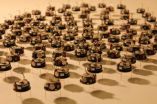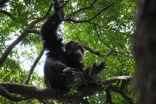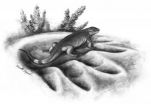(Press-News.org) The first MRI scan to show 'brown fat' in a living adult could prove to be an essential step towards a new wave of therapies to aid the fight against diabetes and obesity.
Researchers from Warwick Medical School and University Hospitals Coventry and Warwickshire NHS Trust used a magnetic resonance imaging (MRI) based method to identify and confirm the presence of brown adipose tissue in a living adult.
Brown fat has become a hot topic for scientists due its ability to use energy and burn calories, helping to keep weight in check. Understanding the brown fat tissue and how it can be used to such ends is of growing interest in the search to help people suffering from obesity or at a high risk of developing diabetes.
Dr Thomas Barber, from the Department of Metabolic and Vascular Health at Warwick Medical School, explained, "This is an exciting area of study that requires further research and discovery. The potential is there for us to develop safe and effective ways of activating this brown fat to promote weight loss and increase energy expenditure – but we need more data to be able to get to that point."
"This particular proof of concept is key, as it allows us to pursue MRI techniques in future assessments and gather this required information."
The study, published in The Journal of Clinical Endocrinology and Metabolism, outlines the benefits of using MRI scans over the existing method of positron emission tomography (PET). Whilst PET does show brown fat activity, it is subject to a number of limitations including the challenge of signal variability from a changing environmental temperature.
Unlike the PET data which only displays activity, the MRI can show brown fat content whether active or not – providing a detailed insight into where it can be found in the adult body. This information could prove vital in the creation of future therapies that seek to activate deposits of brown fat.
Dr Barber added, "The MRI allows us to distinguish between the brown fat, and the more well-known white fat that people associate with weight gain, due to the different water to fat ratio of the two tissue types. We can use the scans to highlight what we term 'regions of interest' that can help us to build a picture of where the brown fat is located."
With the proof of concept now completed, the next step is to further validate this technique across a larger group of adults.
INFORMATION:
The team includes Dr Barber, Professor Charles Hutchinson, Dr Terence Jones, Dr Narendra Reddy and Dr Sarah Wayte.
Dr Barber works at the Human Metabolism Research Unit at UHCW. The unit has benefitted from substantial investment through the Science City Research Alliance programme.
The Science City Research Alliance (SCRA) is a large scale, long-term research programme between the University of Birmingham and the University of Warwick.
Key milestone for brown fat research with a ground-breaking MRI scan
2014-04-17
ELSE PRESS RELEASES FROM THIS DATE:
Sprifermin offers benefit for cartilage loss from knee osteoarthritis
2014-04-17
In a new study in patients with osteoarthritis (OA) of the knee, at 12 months, total femorotibial cartilage thickness loss was reduced in sprifermin (recombinant human fibroblast growth factor 18)-treated knees compared to placebo-treated knees, with effects being significant in the lateral femorotibial compartment but not in the central femorotibial compartment.
Results published in Arthritis & Rheumatology, a journal of the American College of Rheumatology (ACR), showed that sprifermin dosed at 100µg reduced loss of cartilage thickness and volume in the total femorotibial ...
Distracted driving among teens threatens public health and safety
2014-04-17
Philadelphia, PA, April 17, 2014 – Motor vehicle crashes rank as the leading cause of teen deaths and in 2008, 16% of all distraction-related fatal automobile crashes involved drivers under 20 years of age. These grim statistics, coupled with an increasing nationwide awareness of the dangers of distracted driving for all ages, prompted the publication of an important supplement to the Journal of Adolescent Health that explores the causes of distracted driving and offers practical recommendations to reduce the incidence of distracted driving among teens.
"Although public ...
Creative activities outside work can improve job performance
2014-04-17
SAN FRANCISCO -- Employees who pursue creative activities outside of work may find that these activities boost their performance on the job, according to a new study by San Francisco State University organizational psychologist Kevin Eschleman and colleagues.
Creative pursuits away from work seem to have a direct effect on factors such as creative problem solving and helping others while on the job, said Eschleman, an assistant professor of psychology.
The study examined whether creative activity might have an indirect impact on employees' performance by providing them ...
Research shows that bacteria survive longer in contact lens cleaning solution than thought
2014-04-17
Each year in the UK, bacterial infections cause around 6,000 cases of a severe eye condition known as microbial keratitis – an inflammation and ulceration of the cornea that can lead to loss of vision. The use of contact lenses has been identified as a particular risk factor for microbial keratitis. New research, presented today at the Society for General Microbiology Annual Conference in Liverpool, shows that a bacterial strain associated with more severe infections shows enhanced resistance to a common contact lens disinfectant solution.
Researchers from The University ...
Simplicity is key to co-operative robots
2014-04-17
A way of making hundreds - or even thousands - of tiny robots cluster to carry out tasks without using any memory or processing power has been developed by engineers at the University of Sheffield, UK.
The team, working in the Sheffield Centre for Robotics (SCentRo), in the University's Faculty of Engineering, has programmed extremely simple robots that are able to form a dense cluster without the need for complex computation, in a similar way to how a swarm of bees or a flock of birds is able to carry out tasks collectively.
The work, published today [Thursday 17 April ...
At least 1 in 20 adult outpatients misdiagnosed in US every year
2014-04-17
At least one in 20 adults is misdiagnosed in outpatient clinics in the US every year, amounting to 12 million people nationwide, and posing a "substantial patient safety risk," finds research published online in BMJ Quality & Safety.
Half of these errors could be potentially harmful, say the authors, who add that their findings should prompt renewed efforts to monitor and curb the numbers of misdiagnoses.
To date, patient safety improvements have largely focused on hospital stays and issues such as infections, falls, and medication errors, say the authors. But most ...
The Lancet: Changing where a baby is held immediately after birth could lead to improved uptake of procedure that reduces infant iron deficiency
2014-04-17
Changing where a newborn baby is held before its umbilical cord is clamped could lead to improved uptake in hospitals of delayed cord clamping, leading to a decreased risk of iron deficiency in infancy, according to new results published in The Lancet.
Delaying clamping of the umbilical cord until around two minutes after birth allows for blood to pass from the mother's placenta to the baby, and has previously been shown to reduce the risk of iron deficiency in infancy.
However, current recommendations – based on studies conducted 35 years ago – suggest that for effective ...
Chimpanzees prefer firm, stable beds
2014-04-17
Chimpanzees may select a certain type of wood, Ugandan Ironwood, over other options for its firm, stable, and resilient properties to make their bed, according to a study published April 16, 2014 in the open-access journal PLOS ONE by David Samson from the University of Nevada and Kevin Hunt from Indiana University.
Chimpanzees use tree branches to build beds or nests in trees. They select certain tree species to sleep in more frequently than other, but the reason for selecting a particular tree is unclear. To determine whether the physical properties of trees influenced ...
In funk music, rhythmic complexity influences dancing desire
2014-04-17
Rhythmic drum patterns with a balance of rhythmic predictability and complexity may influence our desire to dance and enjoy the music, according to a study published April 16, 2014 in the open-access journal PLOS ONE by Maria Witek from University of Oxford and colleagues from Aarhus University, Denmark and Oxford University.
Many people find themselves unable to resist moving their bodies to the thumping beat of hip-hop, electronic, or funk music, but may feel less desire to dance when listening to a highly syncopated type of music, like free jazz. Researchers interested ...
New species discovery sheds light on herbivore evolution
2014-04-17
A new fossil may provide evidence that large caseid herbivores, the largest known terrestrial vertebrates of their time, evolved from small non-herbivorous members of that group, according to a study published April 16, 2014 in the open-access journal PLOS ONE by Robert Reisz from University of Toronto and Jörg Fröbisch of the Museum für Naturkunde.
The origin and early evolution of vertebrates living on land led to major changes in the structure of terrestrial ecosystems. The first appearance of herbivores played a pivotal role in this transformation, and a newly discovered ...




